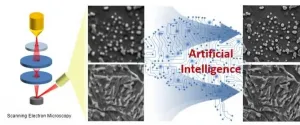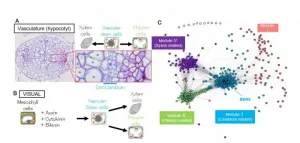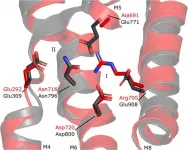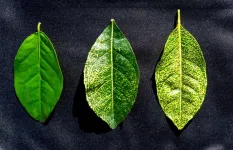Nicotinamide can 'immunize' plants to protect from fungal disease
Research led by Kanazawa University shows that application of the nicotinamide to wheat spike activated plant immunity and then effectively suppressed the disease symptoms and mycotoxin accumulation of Fusarium head blight
2021-06-10
(Press-News.org) Kanazawa, Japan - Fungal diseases in cereal crops cause major economic losses and also threaten human and livestock health, because some fungi produce powerful toxins that might enter the food chain. Farmers use fungicides to control crop diseases, such as wheat head blight. Although agrochemicals are rigorously tested for safety, there can be concerns over chemical residues in food.
Now, researchers at Kanazawa University, in collaboration with colleagues at Ehime University and Nagoya University, have shown that the natural substance nicotinamide (NIM - a vitamin found in food and used as a dietary supplement) can help stimulate plant immune systems. Pre-treatment with NIM can prevent or reduce development of fungal disease in wheat plants. This knowledge could lead to new approaches to tackle crop diseases. The team recently published their work in the International Journal of Molecular Sciences.
When the team pre-treated with NIM the spikes of wheat plants (carrying the young grains that are later harvested to make flour) and then inoculated the plants with conidia of Fusarium graminearum (which causes head blight), the NIM pre-treatment strongly suppressed the disease. Pre-treated plants contain much less fungal biomass, and less of a mycotoxin it produces, compared with water-treated plants.
The team also performed metabolomics to analyze the contents of hundreds of compounds in the plants and found that NIM pre-treatment increased the amounts of 375 substances. Among those markedly increased were several antimicrobial and antioxidant compounds.
"We found that pre-treating wheat plants with NIM led to the activation of plant immune response and much higher content of the plant's own defense-related compounds, including antimicrobial substances", says lead author Yasir Sidiq. "This work builds on previous research using other natural chemicals related to NIM and has the added advantages of being relatively cheap, readily available, and stable at room temperature."
This work represents a significant step forward in developing environmentally friendly ways to tackle important diseases in crops. "We expect our study will lead to novel approaches in agriculture," corresponding author Takumi Nishiuchi explains, "potentially replacing toxic fungicide sprays with new ways of stimulating the plant innate immune responses - similar to how vaccinating humans or animals primes their immune systems against later infection."
INFORMATION:
[Attachments] See images for this press release:
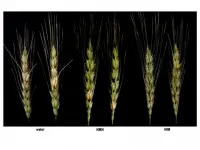
ELSE PRESS RELEASES FROM THIS DATE:
2021-06-10
Curtin University researchers have helped uncover the four billion year old story of a lunar sample brought from the Moon to Earth, by the manned Apollo 17 mission more than 50 years ago.
The global research collaboration, involving scientists from the UK, Canada, Sweden and Australia, aimed to analyse the ancient rock sample through a modern lens to find out its age, which crater it came from and its geological trajectory.
That modern lens was provided, in part, by both Curtin's Geoscience Atom Probe Facility* and Space Science and Technology Centre* (SSTC) where the research team was ...
2021-06-10
With the onset of the 4th industrial revolution, artificial intelligence has recently been utilized in smartphone cameras, providing functions such as auto-focusing, face recognition, and 100x zoom, to dramatically improve our daily life. It has also been applied to research and development of new materials.
A joint research team from POSTECH and Korea Institute of Materials Science (KIMS) has applied deep learning to the scanning electron microscopy (SEM) system to develop a technique that can detect and improve the quality of SEM images without human oversight. The EMS is an essential material analysis equipment used for developing new materials. The findings from this research were recently published ...
2021-06-10
An inter-university research group has succeeded in constructing the gene expression network behind the vascular development process in plants. They achieved this by performing bioinformatics analysis using the 'VISUAL' (*1) tissue culture platform, which generates vascular stem cells (*2) from leaf cells. In this network, they also discovered a new BES/BZR transcription factor (*3), BEH3, which regulates vascular stem cells. In addition, they illuminated a novel vascular cell maintenance system whereby BEH3 competes with other transcription factors from the same BES/BZR family in order to stabilize vascular stem ...
2021-06-10
Cell viability require that a variety of functions at the cell membrane are maintained properly. P-type ATPases translocate substrates across the membrane, and they have evolved into different types taking care of specific substrates within a diverse range. Now, key structural aspects have been described on how two different types of P-type ATPases - a Ca2+ transporting Ca2+ -ATPase and a lipid transporting P4-ATPase - have adapted to different substrates and physical environments.
Many bacteria export intracellular calcium using active transporters homologous to the well-described ...
2021-06-10
Researchers from Tel Aviv University took part in a new international study proposing an amendment to the widely accepted theory on the extinction of animal species - by moving the focus from the animal's body size to its reproductive capacity. The researchers found gaps and incompatibilities between mammals and amphibians in the relation between body size and extinction risk: Whereas large mammals bear a smaller number of offspring per birth, leading to higher risk of extinction, larger amphibian females lay more eggs, reducing the threat to the species.
The researchers analyzed data from databases on both extinction risks and reproductive capacities of various species of amphibians (e.g., frogs and salamanders). Contributors to the ...
2021-06-10
How much do the effects of climate change contribute to extreme weather events? It's hard to say--the variables involved are plentiful, each event is unique, and we can only do so much to investigate what didn't happen. But a new paper from Lawrence Berkeley National Laboratory (Berkeley Lab) climate scientist Michael Wehner investigates the question for one particular element of one significant storm and makes the results available to those who lived through it.
In the paper, "Attributable human-induced changes in the magnitude of flooding in the Houston, Texas region during Hurricane Harvey," published May 19 in Climatic Change, Wehner and Christopher Sampson from Fathom Bristol used a hydraulic ...
2021-06-10
Even on a good day, DNA is constantly getting damaged.
Nicks, scratches, breaks: the delicate strands that carry life's genetic code take a beating as they jumble about in the course of their work. If left untreated, errors accumulate, with fatal consequences -- such as cancerous tumors -- for the cell and the organism.
This is where two key proteins come to the rescue: PARP -- or poly ADP ribose polymerase -- acts as a marker for a trouble spot, allowing XRCC1 -- or X-ray repair cross-complementing protein 1 -- to zoom in and begin a repair.
This much has been known for some time and was even recognized in the 2015 Nobel prizes ...
2021-06-10
A team of archaeologists from the Hebrew University of Jerusalem (HU) made a rare discovery when they unearthed a small clay seal impression dating back some 7000 years. The impression, with two different geometric stamps imprinted on it, was discovered in Tel Tsaf, a prehistoric village located in Israel's Beit She'an Valley up north.
The discovery was made as part of a dig that took place between 2004 and 2007 and was led by HU's Professor Yosef Garfinkel along with two of his students, Professor David Ben Shlomo and Dr. Michael Freikman, both of whom are now researchers at Ariel University. One hundred and fifty clay sealings were originally found at the site, with one being particularly rare and of distinct, historic importance. The object ...
2021-06-10
LA JOLLA--(June 10, 2021) In order for cancer to grow and spread, it has to evade detection by our immune cells, particularly specialized "killer" T cells. Salk researchers led by Professor Susan Kaech have found that the environment inside tumors (the tumor microenvironment) contains an abundance of oxidized fat molecules, which, when ingested by the killer T cells, suppresses their ability to kill cancer cells. In a vicious cycle, those T cells, in need of energy, increase the level of a cellular fat transporter, CD36, that unfortunately saturates them with even more oxidized fat and further curtails their anti-tumor functions.
The discovery, published online in Immunity on June 7, 2021, suggests new pathways for safeguarding the immune system's ...
2021-06-10
Scientists are hoping the RNA of an obscure infection can one day be used like a Trojan horse to deliver life-saving treatments to citrus trees.
The infection, citrus yellow vein disease, was discovered 64 years ago in Riverside and has never been seen elsewhere in the world. Decades later, UC Riverside researchers have finally unraveled the associated pathogen's genetic codes -- a significant step toward harnessing its unique properties.
A paper describing this work was published recently in the journal Frontiers in Microbiology. It opens the door to testing whether this apparently ...
LAST 30 PRESS RELEASES:
[Press-News.org] Nicotinamide can 'immunize' plants to protect from fungal disease
Research led by Kanazawa University shows that application of the nicotinamide to wheat spike activated plant immunity and then effectively suppressed the disease symptoms and mycotoxin accumulation of Fusarium head blight

